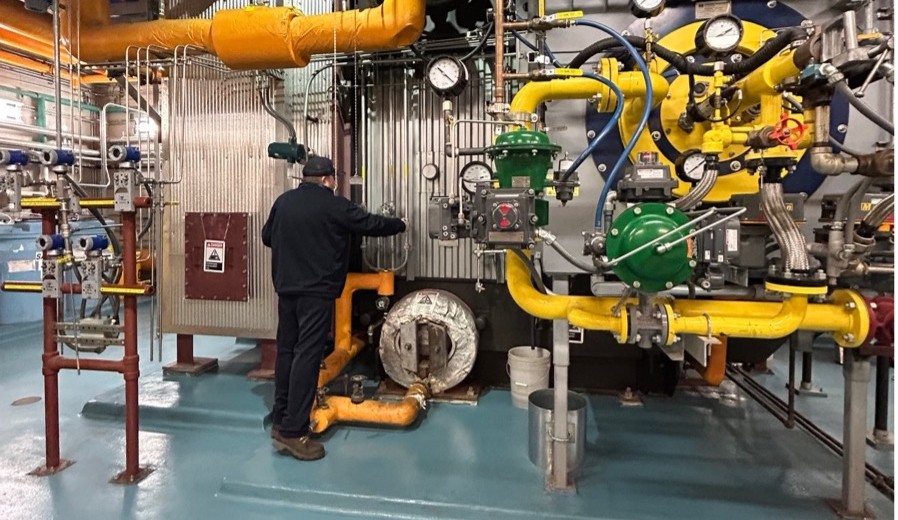The Columbia University Irving Medical Center (CUIMC) is exploring the potential for installing heat pumps across campus, with 1,706 tons of heat pump capacity distributed across various locations:
- William Black Building: 800 tons
- Allan Rosenfield Building: 210 tons
- Irving Cancer Research Center (ICRC): 156 tons
- Russ Berrie Medical Science Pavilion (RB): 120 tons
- Hammer Health Sciences Center: 420 tons
The design of all these projects has been completed; the final pricing for installation will be available this summer.
“If all these projects are approved and implemented, we can save 5,253 tons of carbon emissions,” said Indrajeet Viswanathan, Director for Energy Management and Sustainability at CUIMC. “That’s the energy equivalent to powering 685 single-family homes in the United States. This will be by far the single largest energy reduction and electrification initiative undertaken by CUIMC.”
Heat pumps represent a proven technology that has seen significant advancements in recent years. They offer a dual capability of providing both heating and cooling, allowing a seamless transition from fossil fuel energy sources to electric ones for space heating. Key reasons for the adoption of heat pumps include their high coefficient of performance, minimal fossil fuel emissions, and the ability to recover heat from simultaneous heating and cooling loads, resulting in significant energy savings compared to conventional systems. Even in freezing temperatures, heat pumps can extract heat from the air to warm a space effectively.
Heat pumps boast high efficiency, with a remarkable ability to produce four units of output energy for every unit of input energy, known as the coefficient of performance (COP). This efficiency makes them pivotal in the electrification and decarbonization efforts, significantly outperforming traditional heating systems. For instance, while natural gas furnaces are around 80% efficient and electric heaters are 100%, heat pumps soar at 400% efficiency. This efficiency not only reduces energy consumption but also aids in eliminating the reliance on fossil fuels, thus contributing to the decarbonization of buildings.
Heat pumps come in various forms tailored for different needs:
- Air to Air: Uses air for both heating and cooling purposes.
- Water to Air: Geothermal heat pumps for indoor space heating.
- Air to Water: Provides hot water for the building, particularly useful for indoor space heating.
- Water to Water: Uses geothermal heat pumps for indoor space heating using low-temperature hot water.
Heating and cooling systems typically account for a substantial part of a building's total energy usage. However, heat pumps offer an opportunity for efficiency improvements. In situations where simultaneous heating and cooling are common, heat recovery systems can be deployed to transfer heat between spaces rather than generating or removing it directly. This process leads to direct energy savings by using heat transfer, a more efficient mechanism than heat generation and removal.

